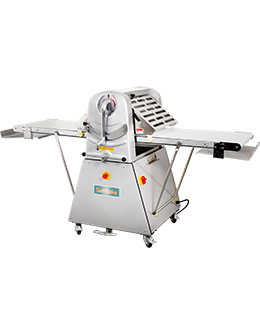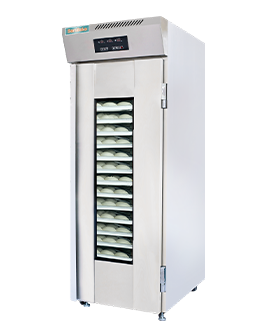Self-Tilting Spiral Mixer
Understanding Spiral Mixers

What Are Spiral Mixers?
Why Are They Popular?
What Makes a Mixer Self-Tilting?
The Self-Tilting Mechanism
A self-tilting spiral mixer incorporates a hydraulic or electric tilt system. Once the mixing process is complete, you activate the tilt feature, and the bowl smoothly tilts forward, allowing easy access for unloading. No more struggling with heavy bowls or risking spills!
How Is It Different from Fixed-Bowl Mixers?
Traditional mixers require manual removal of the bowl, which can be cumbersome and unsafe. Self-tilting models automate this process, saving time and reducing physical strain.
Key Features of Self-Tilting Spiral Mixers
- Automatic Tilting System: Simplifies unloading process
- Robust Construction: Usually made of stainless steel for durability
- Adjustable Speed Settings: For different dough types
- Large Capacity Bowls: Ranging from 20L to over 200L
- Safety Features: Locking mechanisms and emergency stops
- Easy to Clean: Removable bowls and accessible parts
Types of Self-Tilting Spiral Mixers
Based on Capacity
- Small (20–50L): Ideal for small bakeries or cafes
- Medium (50–100L): Suitable for growing businesses
- Large (>100L): For industrial or large-scale production
Design Variations
- Compact models for limited space
- Heavy-duty versions for continuous use
- Combo models with additional features like timers and digital controls
How Does a Self-Tilting Spiral Mixer Work?
Step-by-Step Operation
- Loading: Place ingredients into the bowl.
- Mixing: Start the mixing cycle at chosen speed.
- Completion: Once mixing ends, activate the tilt mechanism.
- Tilting: The bowl tilts forward smoothly, exposing the dough.
- Unloading: Remove the dough easily, then reset the bowl.
This process reduces manual effort and ensures consistent results every time.
Advantages of Using a Self-Tilting Spiral Mixer
- Time-Saving: Faster loading/unloading means more production.
- Enhanced Safety: Reduces the risk of injuries from lifting heavy bowls.
- Consistent Quality: Precise control over mixing parameters.
- Ease of Use: User-friendly controls and automatic features.
- Better Dough Handling: Gentle mixing preserves dough structure, leading to better baked goods.
Applications of Self-Tilting Spiral Mixers
- Bakeries: Perfect for bread, pastry, and pizza dough.
- Restaurants: Ideal for preparing large batches of dough quickly.
- Industrial Food Production: Suitable for mass production with high efficiency.
- Catering Services: Facilitates bulk preparation with minimal effort.
Factors to Consider When Buying
- Capacity Needs: Match mixer size to your production volume.
- Motor Power: Ensures efficient mixing of dense doughs.
- Build Quality: Stainless steel for longevity and hygiene.
- Brand Reputation: Reliable brands often offer better support and warranties.
- Additional Features: Digital controls, timers, or variable speeds.
Maintenance and Care
Regular cleaning after each use prevents buildup. Check moving parts and hydraulic systems periodically. Lubricate components as recommended. Proper maintenance extends the lifespan of your mixer and keeps it running smoothly.
Comparison with Other Mixers
- Traditional Mixers: Manual lifting, more effort, less efficient.
- Planetary Mixers: Good for small batches but less suitable for large doughs.
- Self-Tilting Spiral Mixers: Offer superior efficiency, safety, and ease for large-scale dough production.
Cost and Investment
Prices vary based on capacity and features, typically ranging from $3,000 to $15,000 or more. While an investment upfront, the time saved and improved product quality make it worthwhile for serious bakers and food producers.
Future Trends in Mixer Technology
- Smart mixers with IoT connectivity for real-time monitoring
- Automated cleaning systems
- Enhanced energy efficiency
- Integration with recipe management software
Conclusion
A self-tilting spiral mixer is truly a game-changer for anyone serious about baking or food production. It combines efficiency, safety, and convenience, making large-scale dough preparation easier and more consistent. Whether you're running a bakery or a restaurant, investing in this equipment can elevate your baking game and streamline your workflow. As technology advances, these mixers will only become smarter and more efficient, so staying updated is key.
FAQs
How long does a self-tilting spiral mixer last?
With proper maintenance, these mixers can last 10–15 years or more.
Is a self-tilting mixer suitable for small bakeries?
Yes, especially models with smaller capacities designed for limited space and volume.
Can I use a self-tilting spiral mixer for all types of dough?
Most types, including heavy bread dough and lighter pastry dough, but always check manufacturer specifications.
What safety features should I look for?
Emergency stop buttons, safety locks on tilting mechanisms, and overload protection.
Are self-tilting spiral mixers easy to clean?
Yes, most models feature removable bowls and accessible parts for easy cleaning.
- *Name
- *Title
- *Content
- Name:
- Vickey
- Tel:
+86-18862554041
- Email:
- sales@sambake.com
- Address:
- Xinxiang Industrial Park,Wuxi City,Jiangsu China







